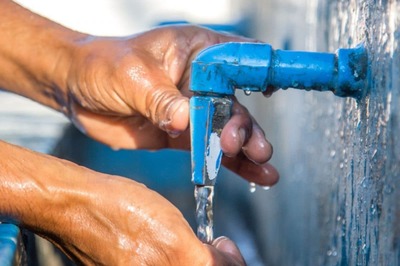
views
The city’s COVID-19 case positivity rate remained above 0.5 per cent on the second consecutive day on Monday, with Delhi government officials assessing the situation before taking a decision on sounding a ’yellow’ alert and imposing restrictions under the Graded Response Action Plan (GRAP). Delhi on Monday recorded 331 COVID-19 cases, the highest single-day rise since June 9, and one death while the positivity rate mounted to 0.68 per cent, according to data shared by the city health department.
On Sunday, it recorded 290 cases with a positivity rate of 0.55 per cent and one fatality, according to officials figures. Further discussions on the situation will be held on Tuesday before a final call on sounding the ’Yellow’ alert and imposing restrictions as per the GRAP is taken, said a senior Delhi government officer.
”Although COVID-19 cases are rising in Delhi and positivity rate has breached the 0.5 per cent mark but hospitalisations are very low and fatality rate is negligible. Any decision about implementation of ’Yellow’ alert restrictions will be taken after further discussions,” said the officer. Sources in the government said that authorities were considering all options available to ensure that the purpose of COVID-19 management and needs of the people in Delhi are best served.
The GRAP approved by Delhi Disaster Management Authority(DDMA) prescribes sounding of the ’Yellow’ alert if positivity rate remains above 0.5 percent for two consecutive days. It involves restrictions including night curfew closure of schools and colleges, alternate day opening of shops of non-essential items and halved seating capacity in metro trains and public transport buses, among others.
The DDMA in view of rising COVID-19 cases has already imposed night curfew in Delhi that will remain in force from 11 pm to 5 pm, till further orders. Officials said that although the ’Yellow’ alert needs to be sounded if positivity rate stays above 0.5 per cent for two days but the DDMA can make necessary amendments and modifications with respect to the GRAP according to the situation, which is assessed from time to time to meet exigencies.
If the ’Yellow’ alert is sounded on Tuesday most activities will come to a grinding halt, just a few months after phased reopening from the second wave lockdown which was imposed in April. The GRAP was approved by DDMA in its meeting in July, in anticipation of a third wave of COVID-19 in Delhi. It was meant to have a clearer picture of imposition and lifting of restrictions accordg to the prevailing COVID situation.
The ’Yellow’ alert restrictions stipulate that shops and establishments of non-essential goods and services, and malls will open based on odd-even formula from 10 AM to 8 PM. Only one weekly market per zone with 50 per cent vendors will be allowed to open.
Restaurants will be permitted with 50 per cent capacity from 8 am to 10 pm while bars can also operate with the same capacity, but from 12 noon to 10 pm. Marriages and funerals will be allowed attendance of 20 persons while all other types of gathering related to social, political, cultural, religious and festival events will be prohibited, the GRAP stipulates.
Also, the Delhi Metro will run at 50 per cent of its seating capacity while auto-rickshaws and cabs can ferry up to two passengers. Buses too will ply with only 50 per cent exempted category passengers. Besides, cinema halls, banquet halls, spas, gyms, outdoor yoga activity, amusement parks, stadia, swimming pools, schools, colleges and educational institutions will not be allowed if ’Yellow’ alert is sounded.
Private offices can function with up to 50 per cent of the staff. In Delhi government offices also, barring certain category of officials, only half of the remaining staff will be allowed under ’Yellow’ alert. Further religious places will open but visitors will not be allowed. Parks and gardens can however open.
The colour-coded GRAP is based on positivity rate (on two consecutive days), cumulative number of new cases (over a week) and average oxygenated-bed occupancy (for a week) will designate four levels of alerts. Further restrictions are imposed at advanced stages of ’Amber’, ’Orange’ and ’Red’ alerts with higher numbers of new cases and hospitalisations.
Read all the Latest India News here




















Comments
0 comment